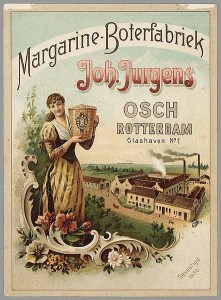One of the joys, and tribulations, of working on BBIH is the amount of material that comes across my desk (or indeed desktop). Joy in that there is such a range of material, and tribulation in the amount! As an indication of the range of material, I’ll highlight a snapshot of articles that I have come across recently.
 The first article that caught my attention was, ‘Jesus Wept’ But Did the Englishman? Masculinity and Emotion in Early Modern England. The article looks at the emotions of men of the Elizabethan and Stuart period across the social, political and religious spectrum. Male tears represented an embarrassing loss of self-control and “a shameful lapse into plebeian, even animal, behaviour”. Apologies to all those crying sportsmen.
The first article that caught my attention was, ‘Jesus Wept’ But Did the Englishman? Masculinity and Emotion in Early Modern England. The article looks at the emotions of men of the Elizabethan and Stuart period across the social, political and religious spectrum. Male tears represented an embarrassing loss of self-control and “a shameful lapse into plebeian, even animal, behaviour”. Apologies to all those crying sportsmen.
The title, Crying in the colonies: The bellmen of early Australia, did not cover the emotional sensibility of the colonists but was a discussion on the use of the town crier, who made announcements, advertised sales, rallied people to political meetings, encouraged locals to attend events and performances as well as announcing the news of the day.
Oxford University Press has launched a monograph series Emotions in History, one of the books is entitled, Learning how to feel: Children’s Literature and Emotional Socialization, 1870-1970, which covers such feelings as trust, compassion, empathy, fear and piety, all charted through a particular literary character.
Expanding further on emotions, and combining it with piety, there is a special issue of German History entitled Feeling and Faith—Religious Emotions in German History, covering early German pietism, the expected behaviour of evangelists in Wilhelmine Germany, as well as the feminization of piety in interwar Germany.
According to John Johnston in Lost in time and space: Unrolling Egypt’s ancient dead (Journal of the Royal Institution of Cornwall, 2013, p. 7-22) the first unrolling of a mummy took place in 1698. Gabriel Moshenska charts the unrolling of mummies in nineteenth-century Britain, a popular spectacle which is also covered by Beverley Rogers in her chapter, Unwrapping the Past: Egyptian Mummies on Show from Popular exhibitions, science and showmanship, 1840-1910. Tomb raiders for mummies or other relics was not confined to the modern period, as Sean Lafferty outlines in Ad sanctitatem mortuorum: tomb raiders, body snatchers and relic hunters in late antiquity. This article charts the actions of tomb raiders despite punishment for such crimes. The increasing popularity of the cult of saints created a demand for such relics as objects of veneration, which in turn led to elaborate strategies of acquisition, including the exhumation, transporting, smuggling and dismembering of the dead. Taking us up to the modern scientific approach to mummies is an article, Augustus Bozzi Granville (1783-1872): Pioneer obstetrician and gynaecological surgeon. Granville performed the first scientific autopsy of an Egyptian mummy discovering, in the process, the oldest known ovarian tumour.
Best title must surely go to, The Sludge Question: The Regulation of Mine Tailings in Nineteenth-Century Victoria, by Susan Lawrence and Peter Davies. The “sludge” in question is the industrial waste from gold mining in Australia. The pollution was a significant environmental problem to an area dependent on gold mining for its economic prosperity. The article discusses the realisation of the environmental problem and the passage of legislation to resolve the issue over a fifty-year period.
 And finally margarine! Who’d have thought there would be two articles on the dairy substitute in a matter of months. First up is Greasing the wheels of rural transformation? Margarine and the competition for the British butter market by Markus Lampe and Paul Sharp which covers the late Victorian period. This is neatly, and chronologically, followed by The Meanings of Margarine in England: Class, Consumption and Material Culture from 1918 to 1953 by Alysa Levene and discusses the product’s continuing association with poverty, its importance as a symbol of domestic material culture, and as a visible marker of a family’s social and economic status. The importance of diet was emphasised by the wonderfully named Gayelord Hauser. The article ‘Look Younger, Live Longer’: Ageing Beautifully with Gayelord Hauser in America, 1920–1975, outlines his prescient encouragement in eating healthily (more vegetables and whole grains) as well as the benefits of exercise (nothing is mentioned about margarine, although I suspect butter would have been frowned upon).
And finally margarine! Who’d have thought there would be two articles on the dairy substitute in a matter of months. First up is Greasing the wheels of rural transformation? Margarine and the competition for the British butter market by Markus Lampe and Paul Sharp which covers the late Victorian period. This is neatly, and chronologically, followed by The Meanings of Margarine in England: Class, Consumption and Material Culture from 1918 to 1953 by Alysa Levene and discusses the product’s continuing association with poverty, its importance as a symbol of domestic material culture, and as a visible marker of a family’s social and economic status. The importance of diet was emphasised by the wonderfully named Gayelord Hauser. The article ‘Look Younger, Live Longer’: Ageing Beautifully with Gayelord Hauser in America, 1920–1975, outlines his prescient encouragement in eating healthily (more vegetables and whole grains) as well as the benefits of exercise (nothing is mentioned about margarine, although I suspect butter would have been frowned upon).
All relevant references will be available on BBIH.

